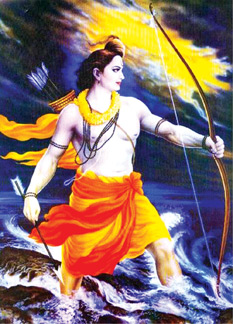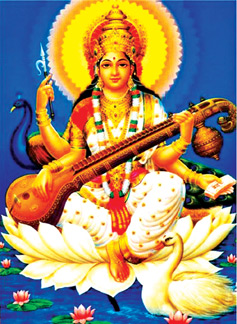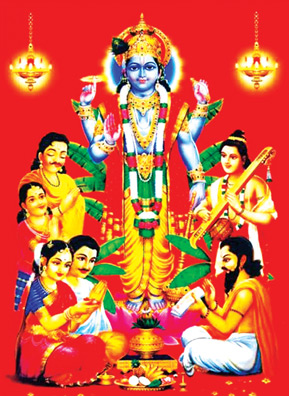The origin of performing arts
by W.T.J.S. Kaviratne Ambalangoda Spl. Cor.
A semi-nomadic tribe who spoke a Proto-Indo-European language (PIE)
in the steppes stretching from Poland to Central Asia has been
identified as Aryans.
 Sanskrit, Greek, Hittite, French, Latin, German, Latvian, Spanish and
Russian are considered as the sub branches of PIE language. Later the
languages were known as Indo-European languages. Indo Aryans and
Iranians are believed to be two tribes who belonged to the larger family
of Indo-Europeans , with their sub divisions of Teutonic, Celtic,
Slavonic, Italic, Hellenic and Armenian races. In the second millennium
B.C. the Aryans had been forced to leave their motherland and wander in
quest of new lands. Thus the Aryans migrated in numerous bands towards
the west, the south and the east. Sanskrit, Greek, Hittite, French, Latin, German, Latvian, Spanish and
Russian are considered as the sub branches of PIE language. Later the
languages were known as Indo-European languages. Indo Aryans and
Iranians are believed to be two tribes who belonged to the larger family
of Indo-Europeans , with their sub divisions of Teutonic, Celtic,
Slavonic, Italic, Hellenic and Armenian races. In the second millennium
B.C. the Aryans had been forced to leave their motherland and wander in
quest of new lands. Thus the Aryans migrated in numerous bands towards
the west, the south and the east.
When the Aryan invaders reached India they found a large number of
devotees of other deities. The Aryans brought the inspired songs with
them which they considered as the most precious possession.
Hymns
The Aryan priests , poets and rishis who came to India in the 2nd
millennium B.C. had mastered a very advanced techniques of composing
poems and hymns praising their gods. The religious hymns were sung
during numerous Vedic sacrifices.
The hymns had been handed down by word of mouth and in the 1st
millennium B.C. They were collected and properly arranged.
For nearly 3,000 years the sanctity of the hymns had been preserved.
The collection of Vedic hymns are known as Rig Veda, Yajur Veda, Sama
Veda and Atharva Veda.
Rig Veda comprises only metrical passages. Most of the verses are
composed of simple metres. Three or four lines are of eight syllables.
Yajur Veda is a prose work.
Rig Veda comprised hymns addressed to various gods.
In Yajur Veda short prose formulas are found addressed to the
articles used in sacrifices. Yajur Veda also deals with life in the
world and other worlds. Sama Veda is a metrical work.
Rig Veda, Yajur Veda and Sama Veda are sacrificial literature.
Atharva Veda comprised charms and spells to drive away diseases and to
injure the enemies and to bring prosperity and long life to the king.
Each Veda comprised three parts known as. Mantras, Brahmanas and
Upanisads.The Brahmanas deal with the precepts and religious duties. The
Upanisads and Aranyakas include the Brahmanas. Hymns had been created by
the poets and the Brahmanas were the creations of the priests and
Upanisads were the meditations of the philosophers.
The earliest seers of Vedic hymns had been fascinated by the sights
of nature in their own simple, unconscious way. The Vedic seers having a
poetic temperament visualised the things of nature with the feeling and
force of imagination.
The Vedic Aryan seers knew what it was to love nature and to be lost
in the wonders of dawn, sunrise, and those mysterious processes which
led to the meeting of the soul and nature.
They considered nature as a living phenomenon with which they could
maintain communion. Certain glorious aspects of nature became the
windows of heaven for the seers who composed hymns.
 Beauty had been a subject of Indian speculation since the earliest
times. Rig Vedic poets revealed the beauty of nature and man. They gave
the highest value to the beauty of expression in poetry. They identified
beauty as Lakshmi and Shri. The hymns of Rig Veda comprised
supplementary hymns to a deity presiding over beauty and prosperity. Beauty had been a subject of Indian speculation since the earliest
times. Rig Vedic poets revealed the beauty of nature and man. They gave
the highest value to the beauty of expression in poetry. They identified
beauty as Lakshmi and Shri. The hymns of Rig Veda comprised
supplementary hymns to a deity presiding over beauty and prosperity.
Similarly, in the Brahmanas, the word Silpa was the common word for
art. The whole world was described as a brilliant piece of divine art or
handiwork.
In the Upanisads knowledge and bliss were believed to be the fullness
of perfection of all enjoyment known as rasa.
From rasa proceed literature and other forms of artistic expressions.
All songs and hymns of Vedic era were sung in praise of the Supreme
Being.
The epics Ramayana and Mahabharata and the Puranas were based on the
concept of a personal God who was the embodiment of all beauty and the
object of man's devotion, service and the rapturous exaltation.
According to the Bhagavat Gita whatever is beautiful in the world is due
to the spark of this divine beauty.
The temples proved to be the centres of attractions due to music,
dance and drama.
In accordance with the concepts enumerated in Vedas and Upanishads
the musicians developed their aesthetic philosophy and thus music and
spiritual endeavour were closely linked.
Music and songs of the Vedic era had to be composed and sung in
praise of God and less lofty themes were not encouraged. The act of
singing was quite similar to the Yogic discipline involving the control
of breath and deep concentration.
Indian music is a melodic system in which the highest form of art is
the continued singing of pure melody ( Raga ) unaided by any words.
The pure melodic elaboration helps both the singer and the listener
to become absorbed in the depths of his own being or reach a plane where
all mundane memory cease to intrude or disturb the blissfullnes,
restfulness or poise which the spirit achieves. All the musicians of
India have been revered as saints.
In the fields of drama and poetry a theory of art was systematically
developed. The highest type of drama was conceived to be heroic play in
which the acts of gods, incarnation of supreme divinity or the sublime
royal heroes of the epics imitated or represented.
Natya Shastra
God Brahma inspired Bharata Muni to compose Natya Shastra a treatise
on dramaturgy. God Brahma said he would create the lore of drama which
promoted Dharma (virtue), material gain and fame which would show for
posterity all activities which were enriched with the idea of all
branches of knowledge and present all arts.
God Brahma said he would create it along with the story required for
its theme with its teachings. God Brahma extracted the text from the Rig
Veda, songs from the Sama Veda, actions from the Yajur Veda and the
emotions from the Atharva Veda. He mentioned eight emotions: Love,
humour, pathos, violence, heroism, fear, loathsomeness and wonder. The
truth of Upanisads is the basic beliefs and practices of Hinduism were
brought to the people in their own language, often in a homely style
enlivened with poetry, wit and satire, through the medium of songs by
men of spiritual achievements known as the saints. In this manner a wave
of popular religious poetry and songs swept all over India.
 In each region, a school or succession of teachers appeared. They
went about making the whole countryside resounding with their songs of
spiritual significance. In each region, a school or succession of teachers appeared. They
went about making the whole countryside resounding with their songs of
spiritual significance.
Vedic music was considered the precursor to Indian music including
Hindustani art music. The relationship between music and religion could
be traced back to the Vedic music. Rig Veda stressed the recitation of
hymns while the Sama Veda on musical notes.
Various types of musical instruments were used in Vedic music and
music was used for propitiating and sacrificial offerings for the
deities. A sacred intoxicant known as Soma was usually drunk during the
Vedic sacrificial offerings. According to Rig Veda, Soma was offered to
the deities as libation and the rest was drunk by the priest.
The singing of the hymns of Sama Veda was done accompanied by the
Veena. Correct gestures, body movement and intonation in singing
according to the accepted procedure were adopted. During the Vedic
period, music was a highly respected subject and all the families in
India took great pains to study, singing, dancing and playing musical
instruments.
Worshipping numerous gods and goddesses representing forces of nature
happened to be the part and parcel of the Indians during the era. On
specific times of the day and night the deities had been worshipped
using diverse melodies. The Indian Goddess of Learning Sarasvati is
shown to be holding the musical instrument Veena in her hands.
This could be considered as a symbolic representation that music in
India was considered divine and both religion and music were one and no
religious activity could be conducted without music.
|

